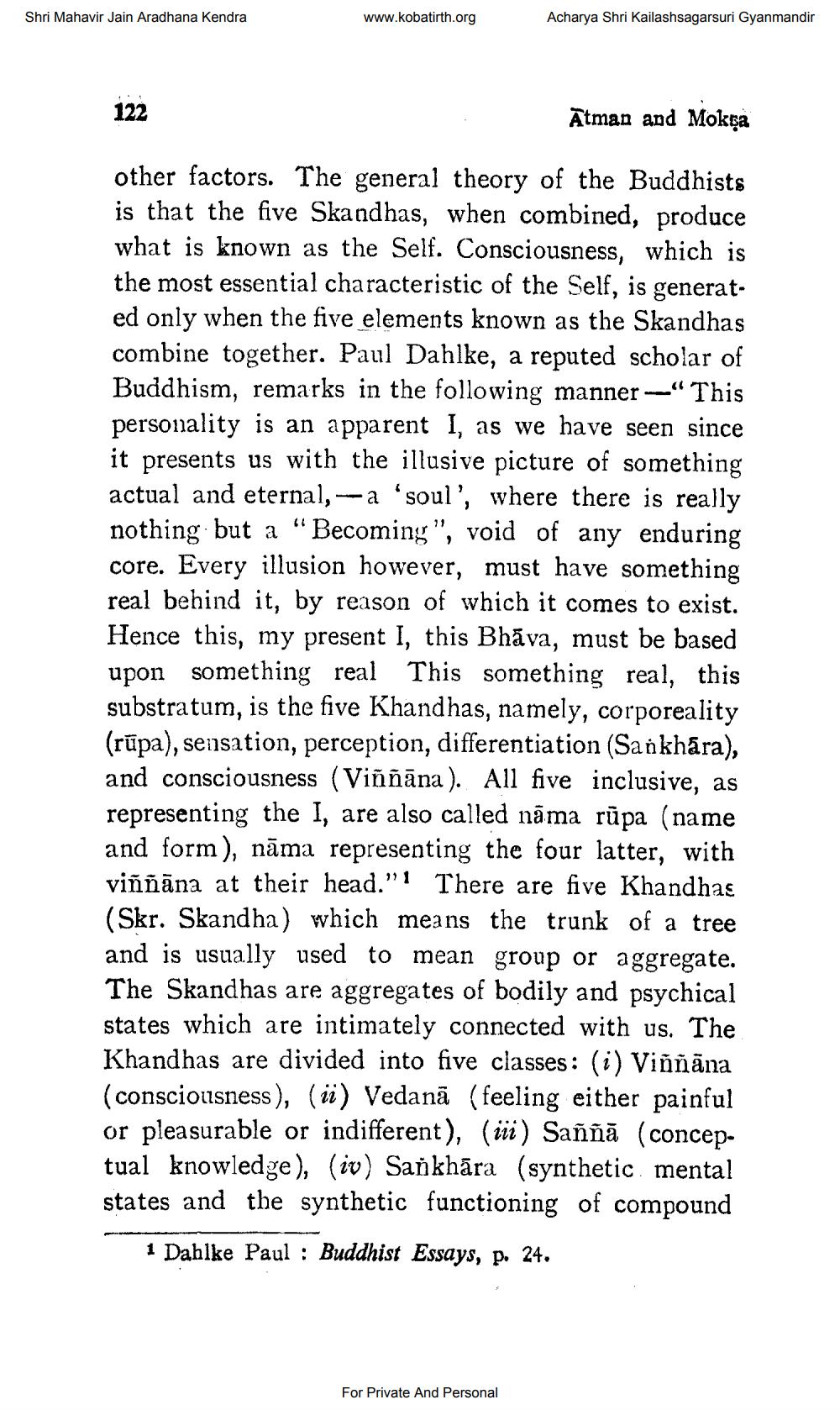________________
Shri Mahavir Jain Aradhana Kendra
www.kobatirth.org
Acharya Shri Kailashsagarsuri Gyanmandir
122
Atman and Mokpa
other factors. The general theory of the Buddhists is that the five Skandhas, when combined, produce what is known as the Self. Consciousness, which is the most essential characteristic of the Self, is generated only when the five elements known as the Skandhas combine together. Paul Dahlke, a reputed scholar of Buddhism, remarks in the following manner --"This personality is an apparent I, as we have seen since it presents us with the illusive picture of something actual and eternal,-a 'soul', where there is really nothing but a “Becoming", void of any enduring core. Every illusion however, must have something real behind it, by reason of which it comes to exist. Hence this, my present I, this Bhāva, must be based upon something real This something real, this substratum, is the five Khandhas, namely, corporeality (rūpa), sensation, perception, differentiation (Sankhāra), and consciousness (Viññāna). All five inclusive, as representing the I, are also called nāma rūpa (name and form), nāma representing the four latter, with viññāna at their head."! There are five Khandhas (Skr. Skandha) which means the trunk of a tree and is usually used to mean group or aggregate. The Skandhas are aggregates of bodily and psychical states which are intimately connected with us. The Khandhas are divided into five classes: (i) Viññāna (consciousness), (ii) Vedanā (feeling either painful or pleasurable or indifferent), (iii) Saññā (conceptual knowledge), (iv) Sankhāra (synthetic. mental states and the synthetic functioning of compound
1 Dahlke Paul : Buddhist Essays, p. 24.
For Private And Personal




